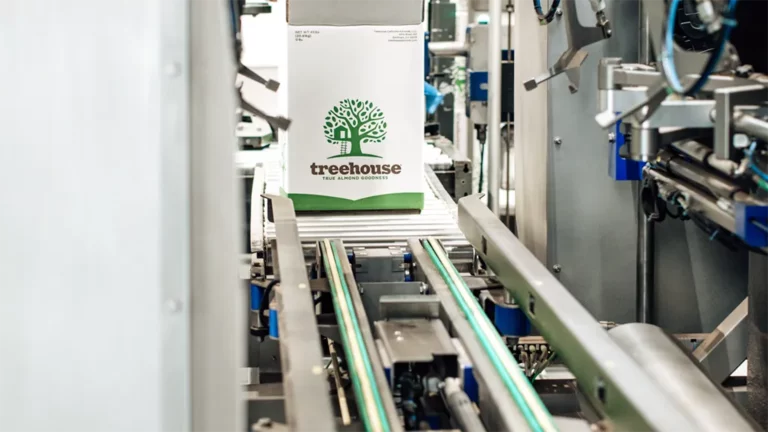Empty cart
Oh no! It appears your cart is empty. Add some almonds to your daily regime with the Treehouse products.
All Blog PostsAlmond Market UpdatesNews
Treehouse Almond Market Update
California handlers shipped 156.2 million lbs of almonds in December, up 15% from shipments of 135.4 million lbs in December last year. Shipments to most destinations were up strongly, making up for a 13.8 million lb short fall in Chinese shipments. Domestic buyers took 15% more than last year, thanks in large part to Turkey the Middle East was almost double (up 98%), Western European shipments were up 32% for the month while Japan, South Korea, Taiwan imported strongly. India was down 8%, but given the currency environment pulled remarkably well. Although Chinese December shipments were down versus a year ago, season-to-date shipments to China are 49% ahead of last year. The pause to catch a breath was not unexpected or yet a cause for alarm.
Total season-to-date shipments now stand at 951 million lbs, up 34% over 708 million lbs in the first five months a year ago. The pace cannot continue as there will not be enough almonds. If over the remaining seven months of the season California ships at the same pace as last season (assuming zero growth), AND plugging the final crop in at 2100 million lbs, total shipments will be 2054 million lbs and the carry-in to next season will calculate out at 415 million lbs (about the same as the carry-in to this season). So not much room for shipment growth over the balance of the season.
Is a 2100 million lb crop now a reasonable number to use? Likely it is going to be pretty close. In December handlers reported receipts of 132 million lbs, bringing the total so far to 2062 million lbs. The 132 million lbs suggests that most hullers finished in December. We have seen in recent years much higher December figures as hullers continued chewing through large crops (315 million in 2011, 198 million in 2013). December receipts last year totaled 94 million lbs and another 44 million subsequently trickled in. In 2014 another 61 million lbs arrived post December. Our sense is that there is another 40 to 70 million lbs out there and 2100 million lbs is still a good number to work with. So no big surprise on the 2016 crop with this report.
Commitments for the 2016 crop are reported at 498 million lbs for the end of December, down from 550 million at the end of November and suggesting new sales of about 104 million lbs in December. This is a slow-down from November, but still reflects a very comfortably sold position in California. Shipments plus commitments total 1449 million lbs or about 70.4% of the available 2100 million lb crop (with 2% loss factor for those of you who are checking the calculations…). This compares to 60.6% a year ago and a typical position over the previous five seasons between 64% and 69%.
Recent storms, lately being called “atmospheric rivers”, in California have been gladly welcomed. Rainfall totals are well ahead of average. Rivers are running higher than most reservoirs can handle and flood control releases are being made. At the risk of sounding ungrateful, we do note that temperatures have been higher than normal, and most of the moisture is in the form of rain not snow. Chilling hours are a concern. Nevertheless the net effect is tremendously positive and California growers are now in a significantly better water supply position versus a month ago.
Prices since last report have increased by about 10 cents per lb. We have seen standards firm from $2.35 per lb to about $2.45 per lb. There is not much premium for sized Californias, suggesting a lack of standard material. Nonpareil kernels are now trading consistently above $3.10 per lb, with hard to find larger kernels being bid above $3.40 per lb. Indian interest has returned a little earlier than anticipated, with NP inshell trading near $2.40 on a sliding scale reflecting a very strong premium over kernel. Manufactured pricing has stayed steady with blanched sliced and slivered selling well near $3.25 per lb and good interest for blanched whole and broken between $2.70 and $2.80 per lb.
Firm pricing despite favorable winter weather reflects a comfortable seller position for current crop. Coming back from the holidays we have noted buyers starting to work on relatively uncovered forward positions, but concentrating on nearby needs. The strong domestic shipping number is a good barometer of actual consumption as almonds and the multitude of products with almond ingredients move off the shelves and need to be restocked. As we noted last month, low prices are working. There is still significant buying that needs to be done. In spite of this, we do not expect that prices will rise much from current levels. New crop prospects have been brightened by the recent rains. The dollar has appreciated over most currencies and buyers will likely continue to play it close as they get through bloom and summer. We continue to caution that availability on certain items will tighten, with particular concern for nonpareil as inshell becomes increasingly hard to find and popular grades and kernel sizes dwindle.
Best regards,
Jonathan Meyer
Treehouse California Almonds, LLC
Ph 559 757 5020
www.treehousealmonds.com
Stay tuned for the release of significant almond industry information, such as almond crop estimates and acreage reports. You’ll also find Almond Board shipping reports and related analysis from the Treehouse Almonds Leadership Team.

Be in the loop for vital news about the California almond market.
Enjoy 10% off when you order 6 or more